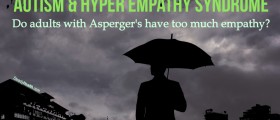
Facts aboutDyslexia
The origin of the name dyslexia comes from the word “dys”, stating that there is something wrong, and “lexia”, labeling letters and words. This is the condition found in both children and adults. Speaking about dyslexia, this explanation of the condition’s name is true, since this is a problem associated with words. Doctors characterize this condition as problems associated with spelling, writing, reading, but also with memory and hearing difficulties. People suffering from dyslexia are not capable to relate sounds and written letters with the actual words, so they usually have many problems with words, symbols and numbers as well. It is very difficult for them to solve some mathematical problems, understand or even memorize something they have seen written. These patients may also experience lack of physical and sensory coordination as symptoms of dyslexia.
You should know that IQ (intelligence quotient) and dyslexia are not related, and that people having this problem are not less smart than those without it. For many generations, people that were very slow in learning, had difficulties with math, spelling, grammar and pronunciation were considered simply lazy. Teachers weren’t educated to know that a problem such as dyslexia actually exists, and because of that, students with these problems as often labeled as sluggish. That has changed and people suffering from dyslexia are now recognized as someone who needs additional attention.
What CausesDyslexia
Nowadays, there is a test for anyone experiencing some of the symptoms mentioned above, known as dyslexia test, used to detect and evaluate the condition, and also to identify the cause of the problem. Knowing the type of the condition is important, because of the appropriate treatment.
Scientists found several reasons that are responsible for dyslexia. Magnocellular pathway or M pathway, responsible for the production of brightness and motion is one of the identified causes. Whenever there is an inconsistency in this pathway, which processes optical impulses, people are likely to suffer from dyslexia.
Parvocellularor P visual pathway, if underdeveloped, is another cause of dyslexia. This problem makes people with dyslexia enable to differentiate details and elegant colors.
When the left and right hemispheres of the brain don’t communicate properly, there is also a chance that the person with this condition will develop dyslexia. Sensory information that is not comprehended as it should be in the brain can also lead to dyslexia. Actually, any sensory coordination problem can be the cause of this learning problem in both children and adults.











-in-Multiple-Sclerosis_f_280x120.jpg)





Your thoughts on this
Loading...